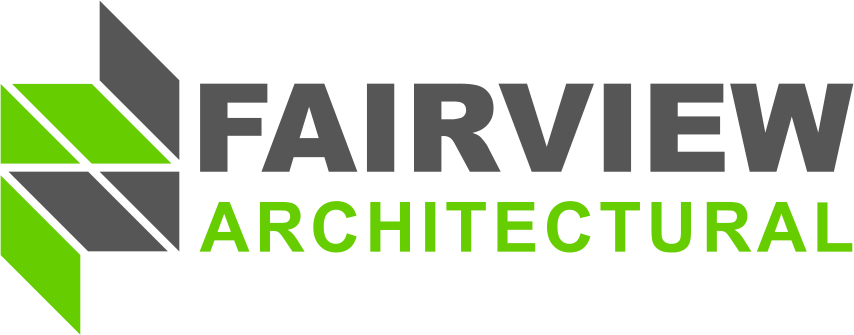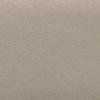Have you ever wondered why different metal composite materials (MCMs) can vary so much in price? It can get overwhelming when you’re trying to decide which materials to use for your next project. Weighing the costs of different materials and trying to stretch the most out of your budget can feel like a puzzle.
There are a number of manufacturers in North America that specialize in supplying MCM flat sheets. In this article we discuss the main cost drivers faced by manufacturers of these materials.
Economies of scale
One of the main cost drivers of MCMs is the economy of scale. This refers to the size of the order. In general, large-quantity orders can help absorb some of the sourcing, shipment, and waste costs and therefore provide a better value per sheet.
Each material also has its own optimal production quantity. For example, for a specialty finish like zinc, this material would need to be globally sourced as a coil and as close as possible to the size needed to produce the project. You need to factor in 10–30% for waste and account for any damage in transit. Therefore, you might need a 4000–5000 sq ft coil to produce a 2000 sq ft project.
If the manufacturer you choose keeps a range of popular finishes as ready to ship stock inventory / then you can generally expect to have the material packed and delivered to you in 2-5 days.
Note: coil inventory is not the same as stock inventory. Coil stock still requires time to produce it into inventory stock. This process takes at least two weeks before, so this time needs to be factored into your delivery schedule.
Finish Type
The other major cost driver of MCMs is the finish type. This applies to all MCMs outside of those found in an Express Range inventory stock.
Natural metals are the highest-cost finish types, including copper, zinc, stainless steel, and special finish aluminum. The lowest-cost finishes are the standard, solid color, high-volume finishes. When we refer to cost, there are a lot of factors at play and are not making a statement about the quality of materials.
Let’s take a deeper dive into the cost breakdown of different finishes.
Two-coat solid color
Two-coat solid color is the lowest cost finish. It includes one coat of primer and one topcoat color. The standard warranty for a two-coat solid finish is 10–20 years. Brighter colors may need an extra gloss layer to increase the gloss level or if the warranty needs to be extended to 30 years.
Metallic finishes
There are two types of metallic finishes: mica and metallic. There is a common myth that a 3-coat metallic finish is better than 2-coat mica finish, but that is simply not true. These two MCMs finishes are different paint systems entirely and are well-suited for different projects.
3-coat metallic finish
A metallic finish can describe both finishes that use a metallic color topcoat or include metal flakes in the color coat. The metal flakes are generally made from aluminum, however, aluminum is soft and therefore a third layer of clear coat finish is required to achieve a longer warranty.
2-coat mica finish
A mica finish describes finishes that include mica flakes in the color coat. These flakes are made from stone. Mica flakes tend to be smaller than metallic flakes and as they are more durable, they have a longer warranty period.
Patterned finishes
Specialty finishes, including patterned, woodgrains, stone look, faux zinc, and other looks that are specially for a specific project and are among the highest costs due to the development process required to achieve these finishes.
Variation in costs of natural metals
Natural metals, including zinc, stainless steel, copper, brass, and anodized aluminum, can vary in price. The variation in metal costs also drives the cost of these MCMs.
Zinc
RHEINZINK is a well-known titanium zinc manufacturer from Germany whose finishes are available through select suppliers such as Fairview Architectural. RHEINZINK source the zinc coil in the size required for the particular project. Zinc is a speciality finish and therefore not a big mover. This means that manufacturers have long lead times, which can drive costs up. Zinc also has both standard finishes and rare finishes, which will also impact the price.
Stainless steel
Stainless steel is available in a mirror finish or a brushed finish. These also vary in price. It is important to note that stainless steel is available in a maximum of 48 inches wide. When manufacturing stainless steel composite material (SSCM), the edges can be wavy, so we recommend factoring for waste. We also recommend factoring in the required widths to better optimize the material.
Copper and brass finishes
Copper and brass are in the same family of metals. Copper composite material (CCM) and brass composite material (BCM) are only globally available in widths of up to 600 mm wide, or occasionally 800 mm wide. Therefore, coil availability is the biggest cost driver for CCM and BCM finishes.
Anodized aluminum finish
Anodized finishes, which are aluminum, are at the higher end of the cost scale. Coil anodizing is a specialty process that few manufacturers can do. However, for these select manufacturers will source material from some of the world leaders in coil anodizing and provide the highest quality anodized finishes. Anodized finishes also tend to come with an up to a 30-year warranty, which is unheard of elsewhere in the industry.
A clear anodized finish is the most common and is the lowest cost, whereas common specialty colors like bronze and champagne will increase the price of the finish. Finally, unique finishes with custom colors will be the highest cost. We recommend using these colors only for larger projects to help absorb the development costs.
Key takeaways
Hopefully this helps you understand what the main cost drivers are for metal composite material.
Contact us today to request a sample or get a quote for your next project.







